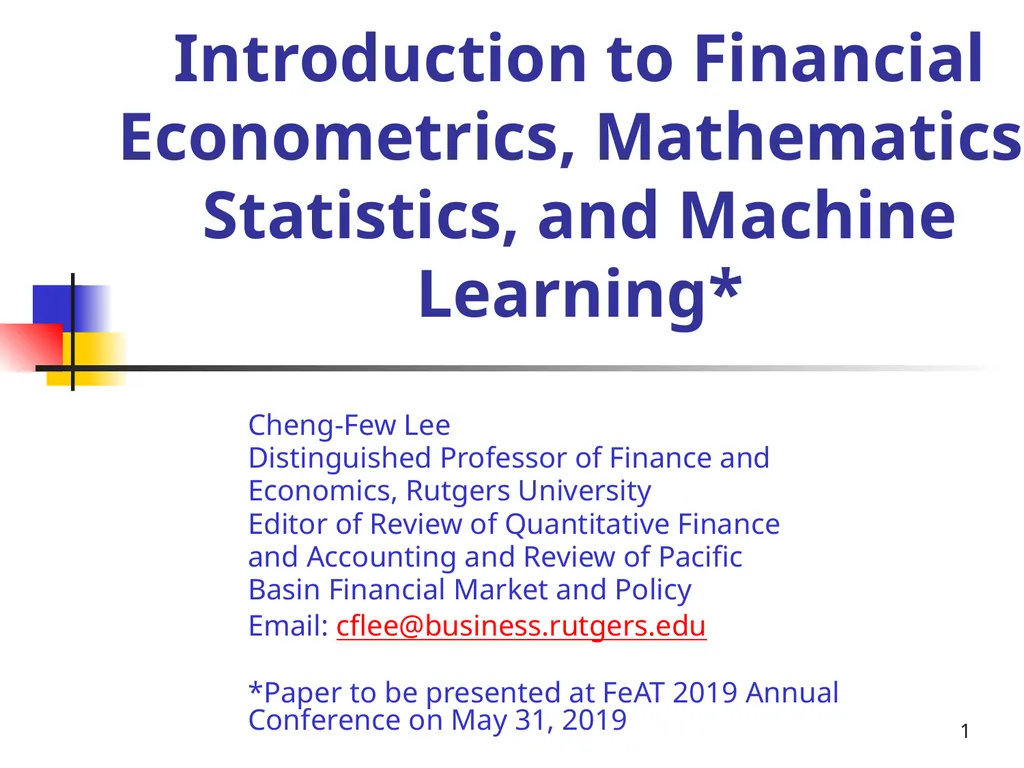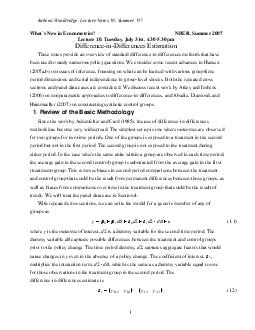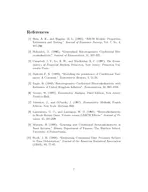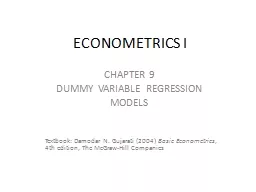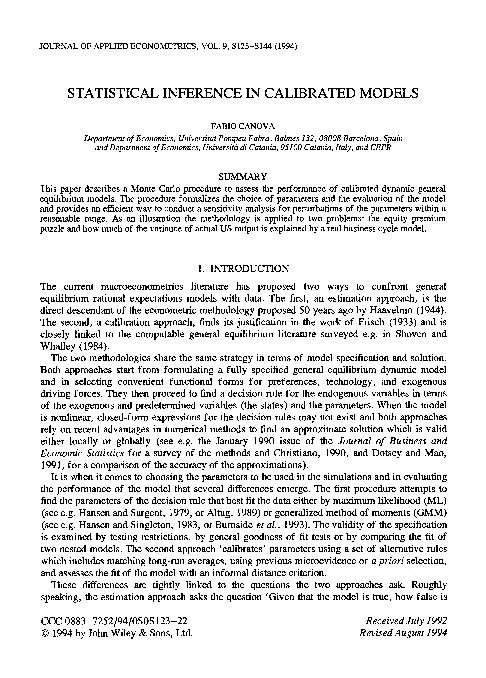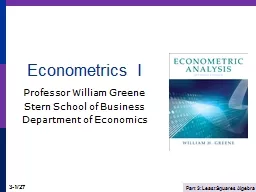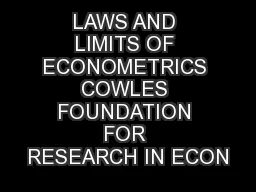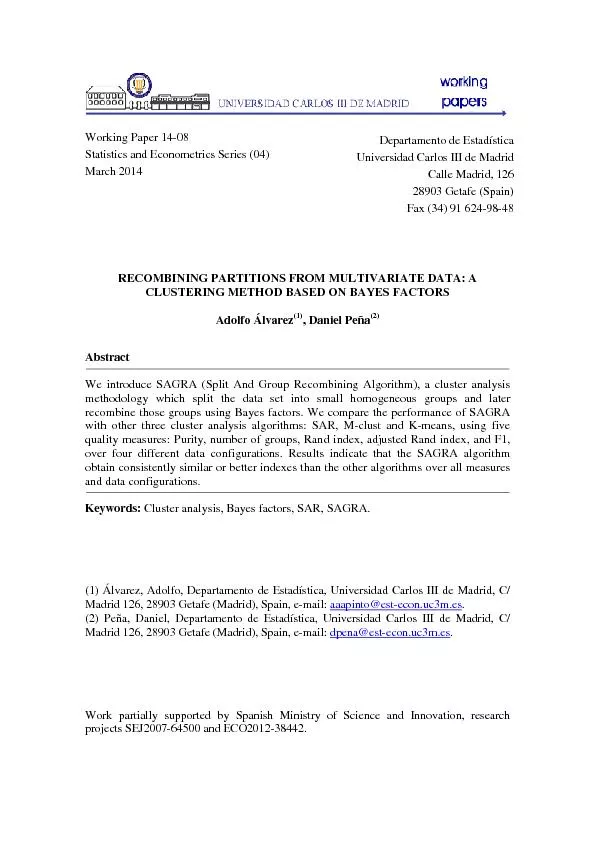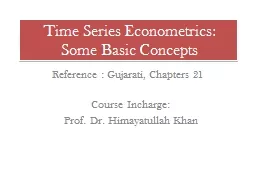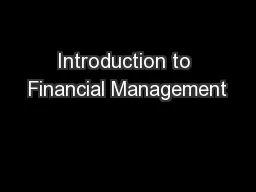1 Introduction to Financial Econometrics,
Author : alida-meadow | Published Date : 2025-06-27
Description: 1 Introduction to Financial Econometrics Mathematics Statistics and Machine Learning ChengFew Lee Distinguished Professor of Finance and Economics Rutgers University Editor of Review of Quantitative Finance and Accounting and Review
Presentation Embed Code
Download Presentation
Download
Presentation The PPT/PDF document
"1 Introduction to Financial Econometrics," is the property of its rightful owner.
Permission is granted to download and print the materials on this website for personal, non-commercial use only,
and to display it on your personal computer provided you do not modify the materials and that you retain all
copyright notices contained in the materials. By downloading content from our website, you accept the terms of
this agreement.
Transcript:1 Introduction to Financial Econometrics,:
1 Introduction to Financial Econometrics, Mathematics, Statistics, and Machine Learning* Cheng-Few Lee Distinguished Professor of Finance and Economics, Rutgers University Editor of Review of Quantitative Finance and Accounting and Review of Pacific Basin Financial Market and Policy Email: cflee@business.rutgers.edu *Paper to be presented at FeAT 2019 Annual Conference on May 31, 2019 2 Outline Chapter Outline Abstract Introduction Financial Econometrics Financial Statistics Financial Technology and Machine Learning Applications of Financial Econometrics, Mathematics, Statistics, and Machine Learning Overall Discussion Summary & Conclusion Appendix A-Chapter titles of Handbook Appendix B-Chapter titles of Textbook Appendix C-Books written and edited by Cheng Few Lee 3 Chapter Outline (1) 1.1 Introduction 1.2 Financial Econometrics 1.2.1 Single Equation Regression Methods 1.2.2 Simultaneous Equation Models 1.2.3 Panel Data Analysis 1.2.4 Alternative Methods to Deal with Measurement Error 1.2.5 Time-Series Analysis 1.2.6 Spectral Analysis 1.3 Financial Mathematics 4 Chapter Outline (2) 1.4 Financial Statistics 1.4.1 Statistical Distributions 1.4.2 Principle Components and Factor Analysis 1.4.3 Non-parametric and Semi-parametric Analyses 1.4.4 Cluster Analysis 1.4.5 Fourier Transformation Method 1.5 Financial Technology and Machine Learning 1.5.1 Classification of Financial Technology 1.5.2 Classification of Machine Learning 1.5.3 Machine Learning Applications 5 Chapter Outline (3) 1.5.4 Other Computer Science Tools Used For Financial Technology 1.6 Applications of Financial Econometrics, Mathematics, Statistics, and Machine Learning 1.6.1 Asset Pricing 1.6.2 Corporate Finance 1.6.3 Financial Institution 1.6.4 Investment and Portfolio Management 1.6.5 Option Pricing Model 1.6.6 Futures and Hedging 6 Chapter Outline (4) 1.6.7 Mutual Fund 1.6.8 Credit Risk Modeling 1.6.8.1 Traditional Approach 1.6.8.2 Machine Learning Approach 1.6.9 Other Applications 1.7 Overall Discussion of This Handbook 1.7.1 Chapter title classification 1.7.2 Keyword classification 1.8 Summary and Concluding Remarks 7 Abstract (1) The main purpose of this introduction chapter is to give an overview of the following 129 papers, which discuss financial econometrics, mathematics, statistics, and machine learning. There are eight sections in this introductory chapter. Section 1 is the introduction, Section 2 discusses financial econometrics, Section 3 explores financial mathematics, and Section 4 discusses financial statistics. Section 5 of this introduction chapter discusses financial technology and machine learning, Section 6 explores applications of financial econometrics, mathematics, 8 Abstract (2) statistics, and machine learning, and Section 7 gives an overview in terms of chapter and keyword classification of the handbook. Finally, Section 8 is a summary and includes some remarks. 9 1.1 INTRODUCTION (1) Financial econometrics, mathematics, statistics, and machine learning have been widely used in empirical research
